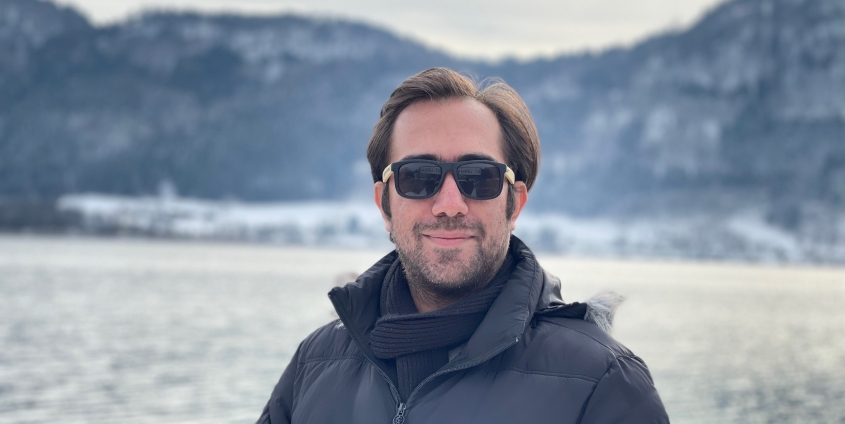Fast and smooth video experience
Every minute, more than 500 hours of video material are published on YouTube. These days, moving images account for a vast majority of data traffic, and there is no end in sight. This means that technologies that can improve the efficiency of video streaming are becoming all the more important. This is exactly what Hadi Amirpourazarian is working on in the Christian Doppler Laboratory ATHENA at the University of Klagenfurt.
On a long train ride from Bregenz to Vienna the internet connection is sometimes great, sometimes extremely slow, now and then we can rely on WLAN, but usually we can’t. A train journey of this kind lends itself perfectly to a series marathon in terms of the time involved. To ensure that we can enjoy videos in good quality even under such adverse conditions without constantly having to wait for the next part of the video to load, a special technology is under constant development at the University of Klagenfurt. Researchers from all over the world are at work in the Christian Doppler Laboratory ATHENA to improve the quality of video streaming while the volume of video on the internet is steadily growing.
One of them is Hadi Amirpourazarian. Two days after he successfully defended his doctoral thesis, we meet him in his office in Lakeside Park and hesitantly ask him whether his research topic can be explained to a technically inept neighbour over the garden fence. “Yes, the COVID situation has made this kind of thing much easier. For the past two years, we have been sitting in front of our screens for more hours than ever before, watching series, films and sports broadcasts from various streaming providers. It’s our job to increase the efficiency of video streaming”, he explains. But what does “efficient” mean in this context? “We want the videos to be delivered to the user in a higher quality at a lower cost. This is our primary goal.” When he refers to costs, he means not only the financial aspect, but also the computational effort, time and energy.
He tells us how to go about this: “First, the videos are split into short 4 to 5 second segments. Then we compress these segments for different levels. This means that you only get the highest quality if your internet connection is particularly good at that moment. Depending on the coverage, the video is delivered one piece at a time. We want to make sure that users with a slow internet connection still get the best possible service. This allows users to enjoy a film without interruption on a long train journey despite the fluctuating conditions.”
Crucial breakthroughs have been made in this field of research over the last ten years. In 2013, a standard for compression was released that made it possible to reduce the size of the video by half while still preserving the overall quality. All the while, compression also consumes computing time and energy. “Overall, the effort pays off,” Hadi Amirpourazarian tells us. In 2020, just in time for the pandemic, a new standard was introduced that can reduce the size of videos by another 50 per cent. The task now is to accelerate the compression even further. This is one of the approaches used: “We use techniques where we infer the other encoding processes based on one quality level. This allows us to reduce the time for compression.”
Hadi Amirpourazarian is part of an international team of researchers from India, Vietnam, Spain, Italy, Iran, and Turkey at the ATHENA Laboratory, which is affiliated to the Department of Information Technology and headed by Christian Timmerer. They deal with the entire chain of video streaming: From the compression of the videos to the distribution of the content to the player, which also has to be as efficient as possible. Amirpourazarian’s focus is on the first work package. He earned his Master’s degree in electrical engineering in Tehran and then spent a year and a half researching telecommunications technologies in Lisbon. He joined the ATHENA Laboratory in Klagenfurt in autumn 2019 and has recently completed his doctorate here.
Hadi Amirpourazarian now holds a postdoctoral position and wants to remain in academia, as he tells us: “I like research and I like the freedom of research. I can work on whatever I want, and I can refine ideas. This is very important for me. I can also teach, which I enjoy very much.” Austria suits the Iranian, including the weather: “I’m from north-western Iran, a mountainous region with a climate very similar to the local conditions. On some days it’s even colder there than here in Austria.“
for ad astra: Romy Müller
A few words with … Hadi Amirpourazarian
What job would you be doing now, if you hadn’t become a scientist?
I’d be a teacher.
Do your parents understand what it is you are working on?
I always give them an overview.
What’s the first thing you do when you get to the office in the morning?
I drink coffee.
Do you have proper holidays? Without thinking about your work?
I plan to do that.
What makes you furious?
People who do not respect our time.
And what calms you down?
Walking and cycling.
Who do you regard as the greatest scientist in history, and why?
I admire all scientists who dedicated themselves to human progress.
What are you looking forward to?
Learning German.










 Foto: KK
Foto: KK
